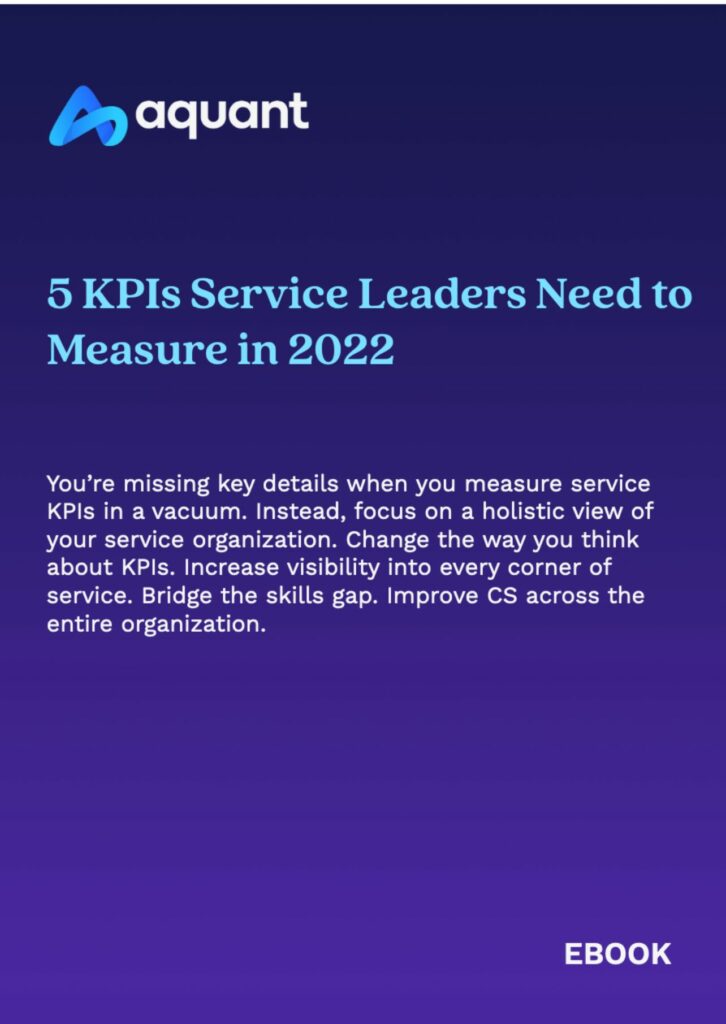Out With the Old, In With the New
Out With the Old, In With the New
As companies look to reinvigorate the customer experience, the pressure is on to be more data-driven.
But what does that mean when your organization is already following industry best practices?
If they are the same industry best practices as a decade ago, it’s time to freshen up the way you measure success.
Here are some new ways to think about traditional KPIs and how to incorporate these Service Intelligence Metrics into your data-driven service organization.
In fact, data from Aquant’s 2022 Service Intelligence Report revealed that the way organizations provide service today is far from customer’s expectations.
Traditional KPI: First Time Fix Rate (FTFR)
What is it?
First Time Fix Rate has been a foundational metric in the field service world for years. It’s a great
metric to help leaders determine whether or not technicians are fixing things correctly the first
time.
The challenge:
However, First Time Fix Rates are highly subjective and are defined very differently across organizations.
For example:
• Company A measures FTFR based on the amount of times an issue occurs with a specified
time frame of the previous visit.
• Company B measures FTFR based on the manager’s discretion. The manager determines
whether or not the job was a successful fix, resulting in subjectivity.
• Company C measures FTFR based on different windows than other companies. They claim to
have a 99% FTFR, and cited Company D having a rate of 75%. However, Company C does not
realize that it measures FTFR in 5-day intervals, while Company D measures their rate in 30-day intervals.
Because of its many variations across companies, FTFR doesn’t always reflect a customer’s true experience. If a technician successfully fixes an appliance that breaks again a short time later, the
customer will still have a poor experience. A more standardized way of looking at this metric is
through a Customer Experience Index.
What to Measure Instead
Service Intelligence Metric: Customer Experience Index
What is it?
The Customer Experience Index looks at service from the customer’s point of view. It considers quality of service provided, loyalty, and more – and helps organizations understand how customers perceive and feel about their experiences.
Why is it more accurate?
Customer Experience Indices remove company-specific metrics. They focus solely on if a technician
had to visit a customer, and how often visits occurred over the first 30 days after an initial break-fix
visit. By looking at repeat visits, organizations can begin to identify trends, behaviors, and potential
improvements.
Want to learn more? Download Aquant’s e-book ‘5 KPIs Service Leaders Need to Measure in 20222 today.

![]() Data usage note: By accessing this content you consent to the contact details submitted when you registered as a subscriber to fieldservicenews.com to be shared with the listed sponsor of this premium content Aquant, who may contact you for legitimate business reasons to discuss the content of this white paper.
Data usage note: By accessing this content you consent to the contact details submitted when you registered as a subscriber to fieldservicenews.com to be shared with the listed sponsor of this premium content Aquant, who may contact you for legitimate business reasons to discuss the content of this white paper.

Useful Links
Member links
Advertise
Copyright © 1927 Media Ltd 2022

